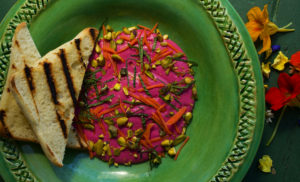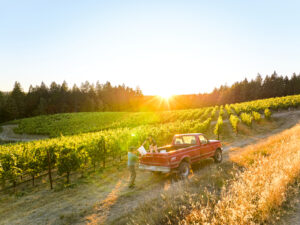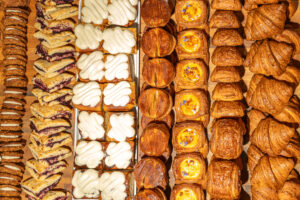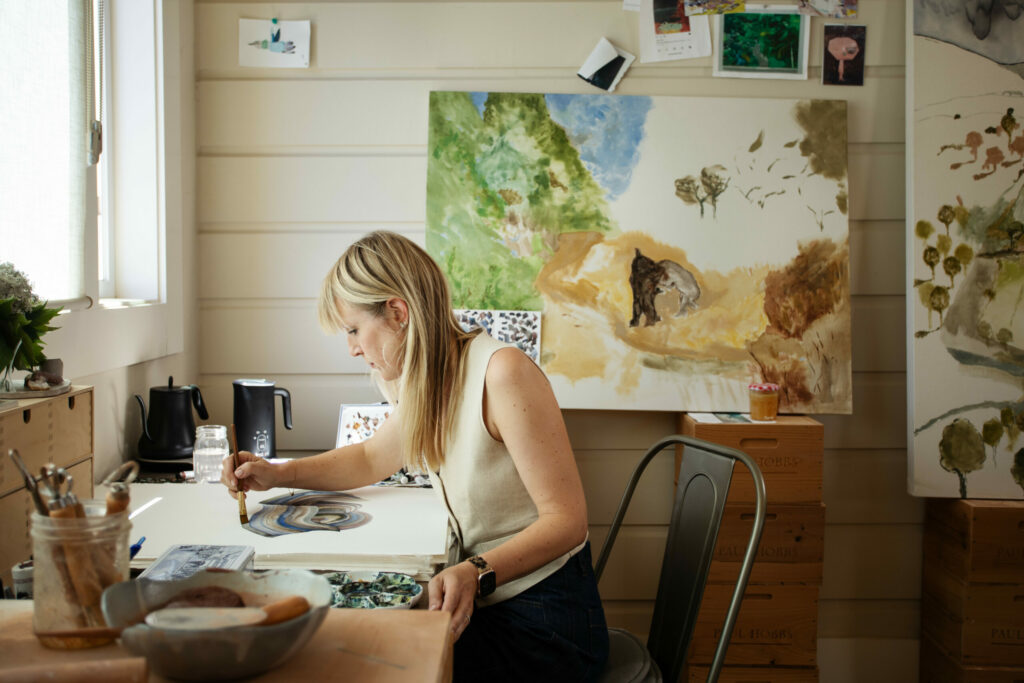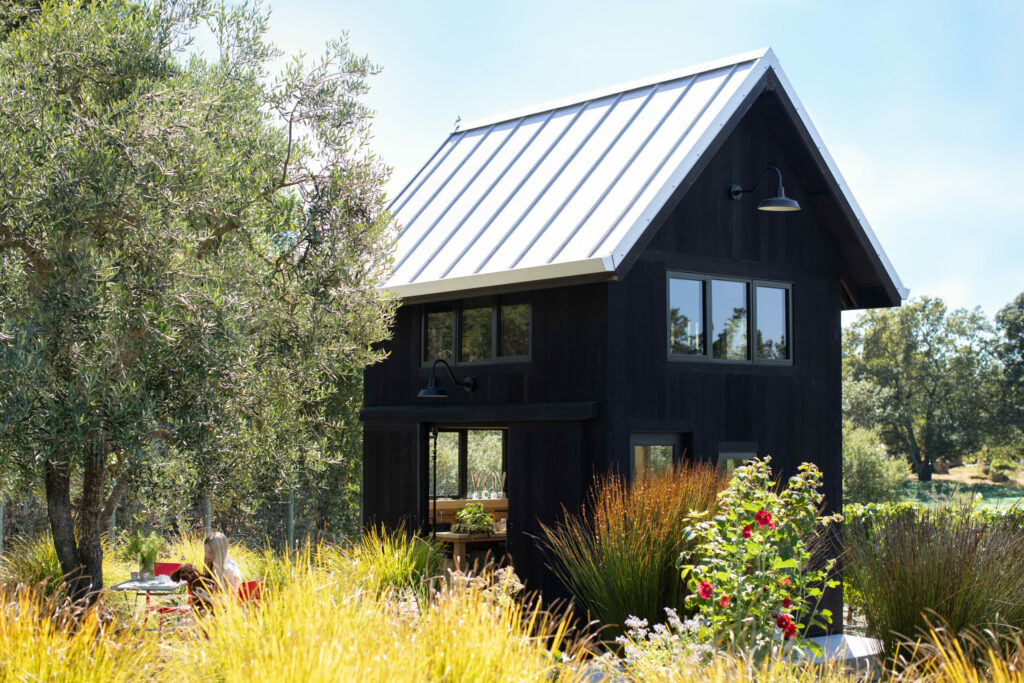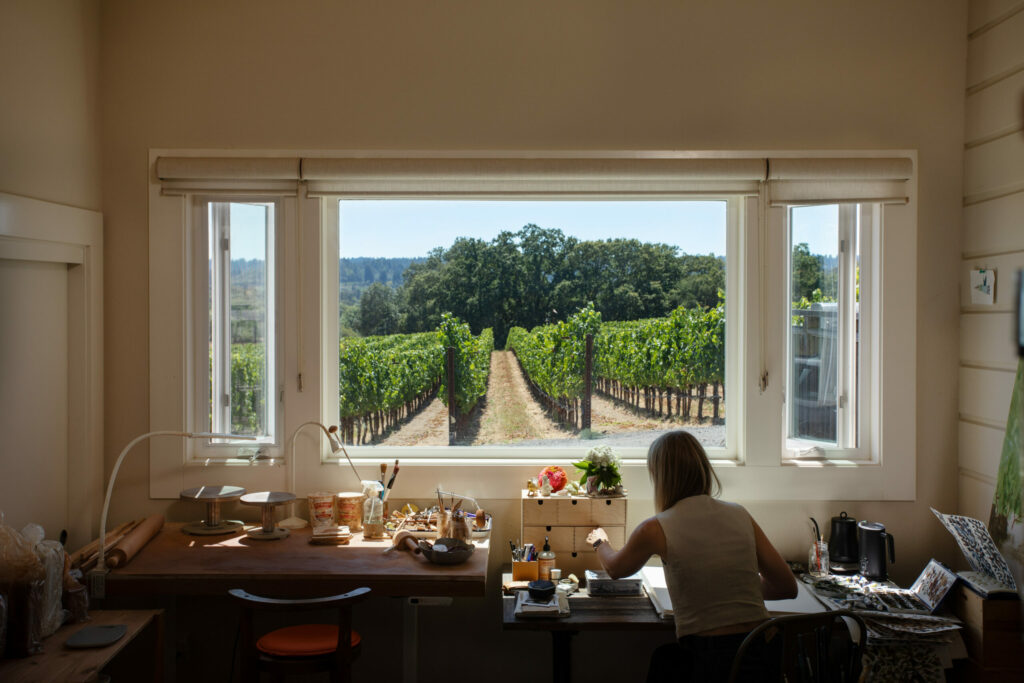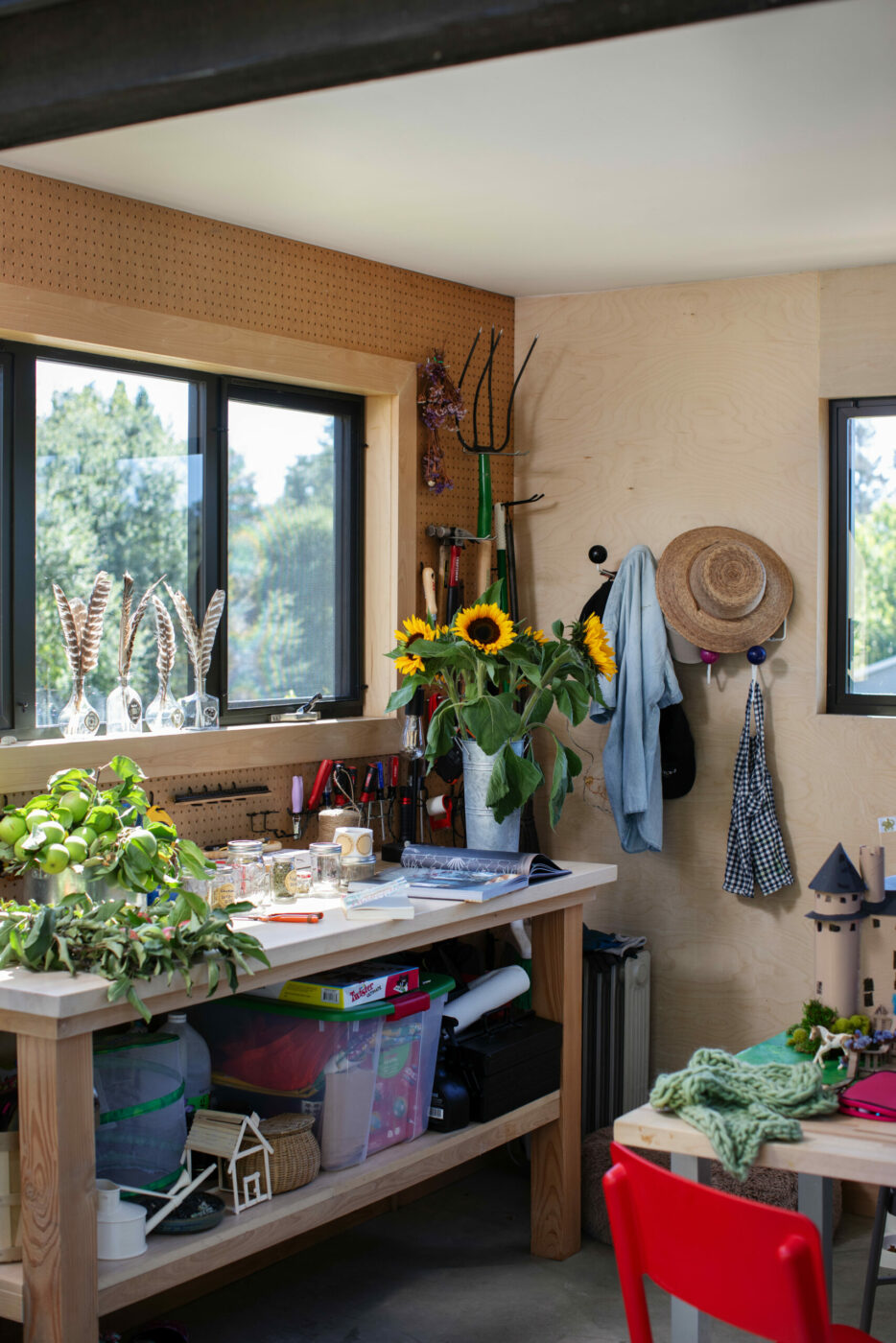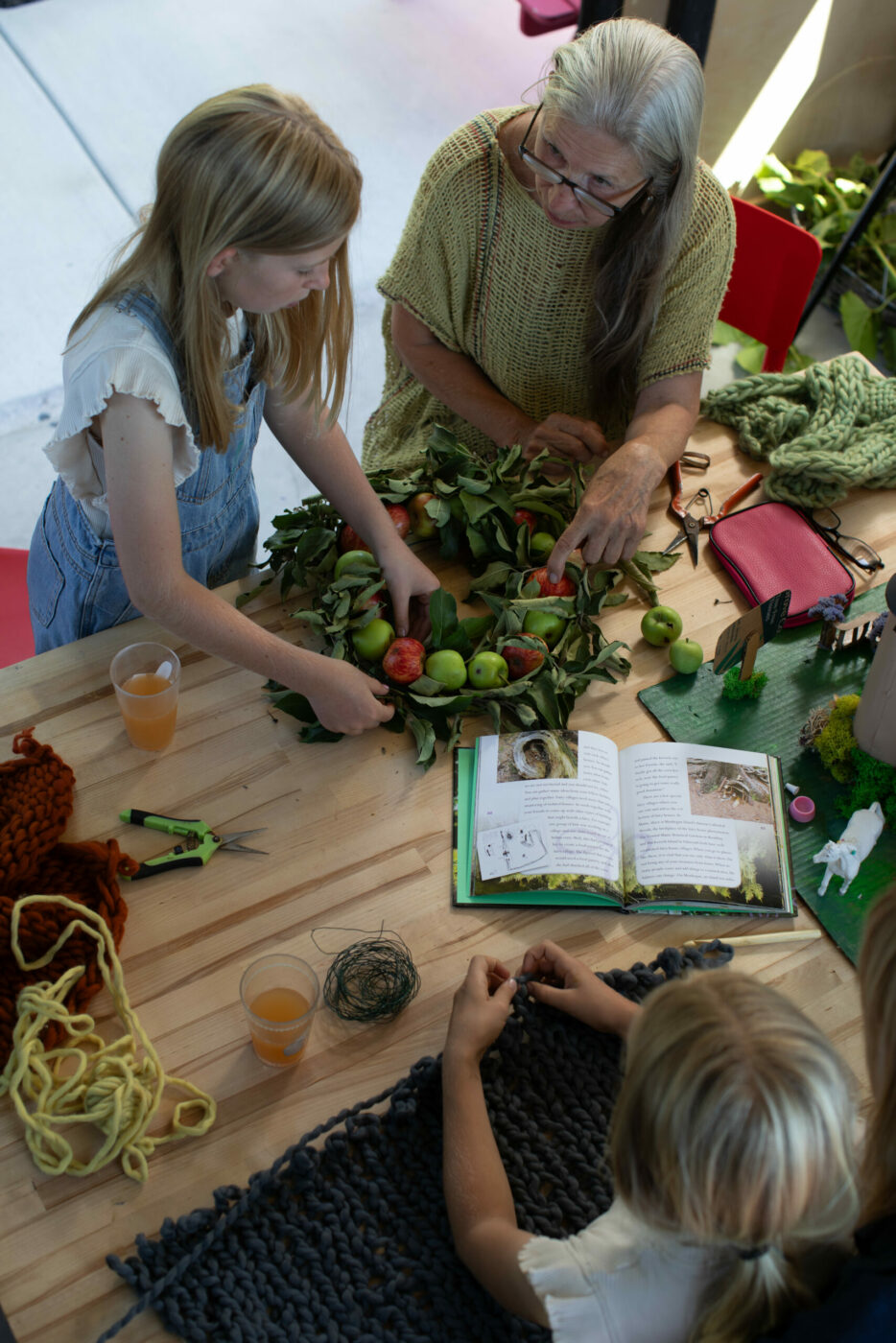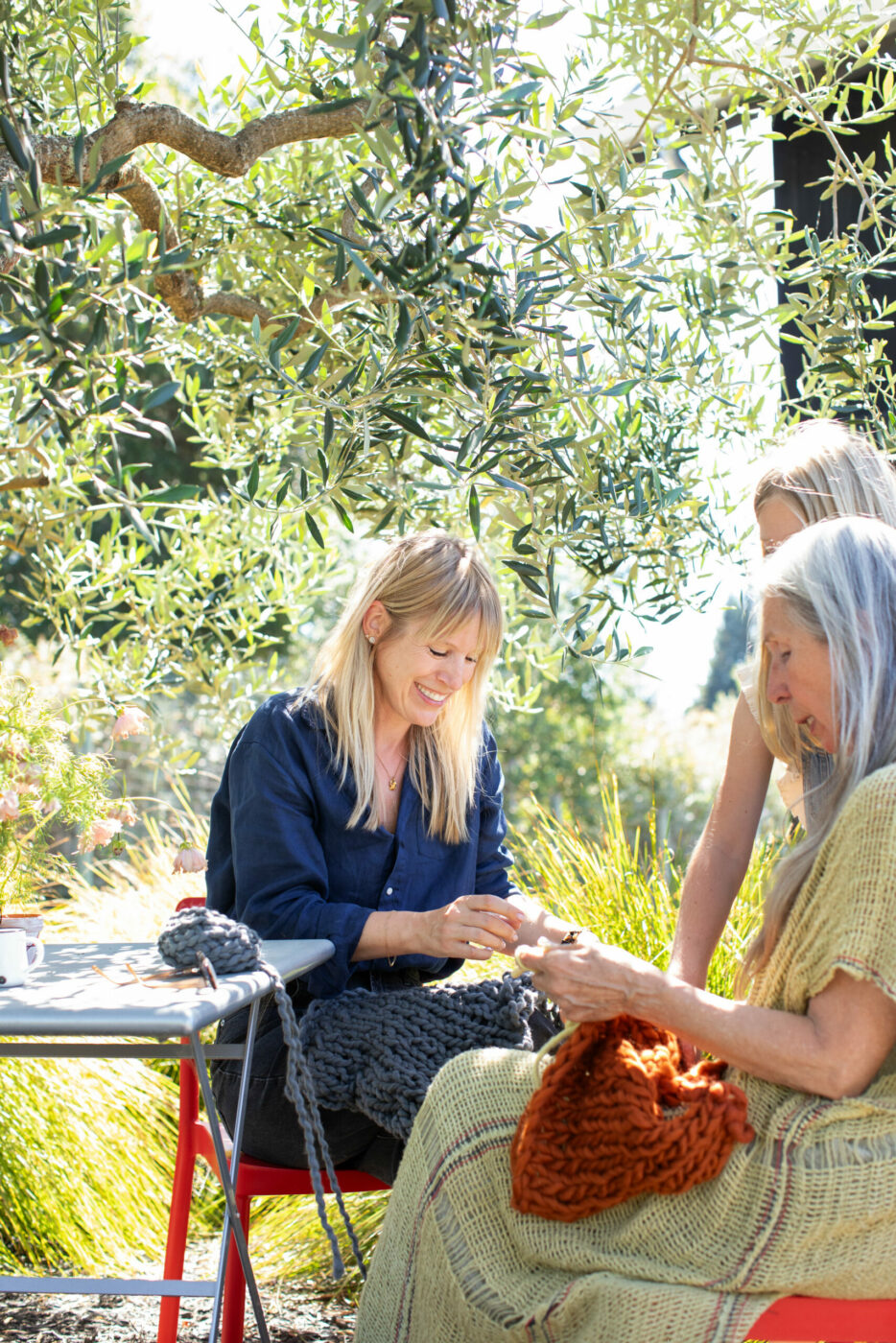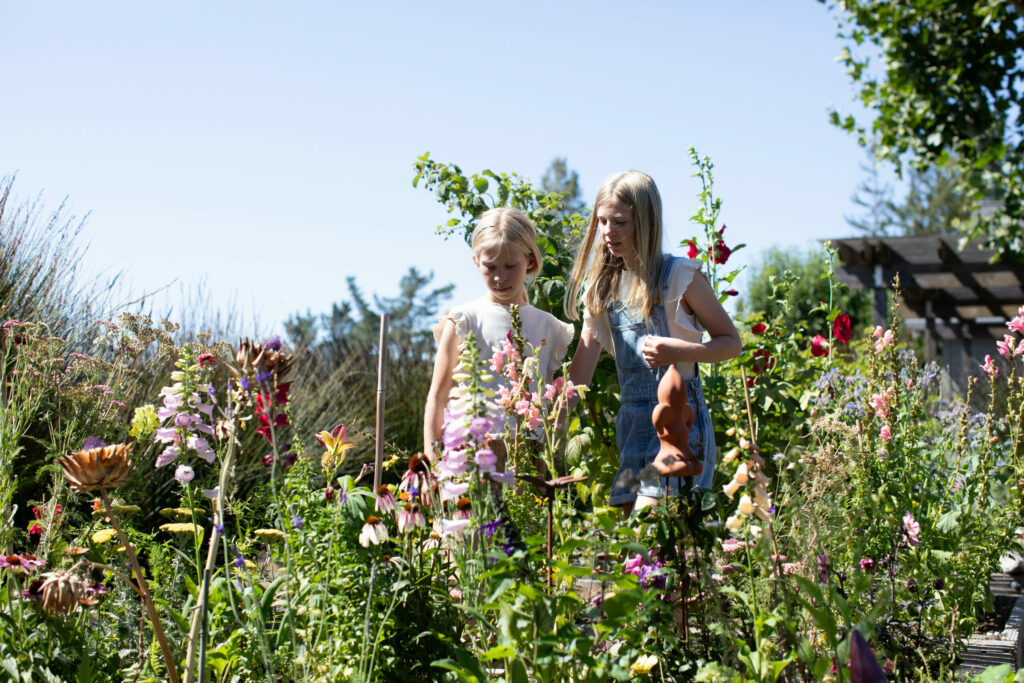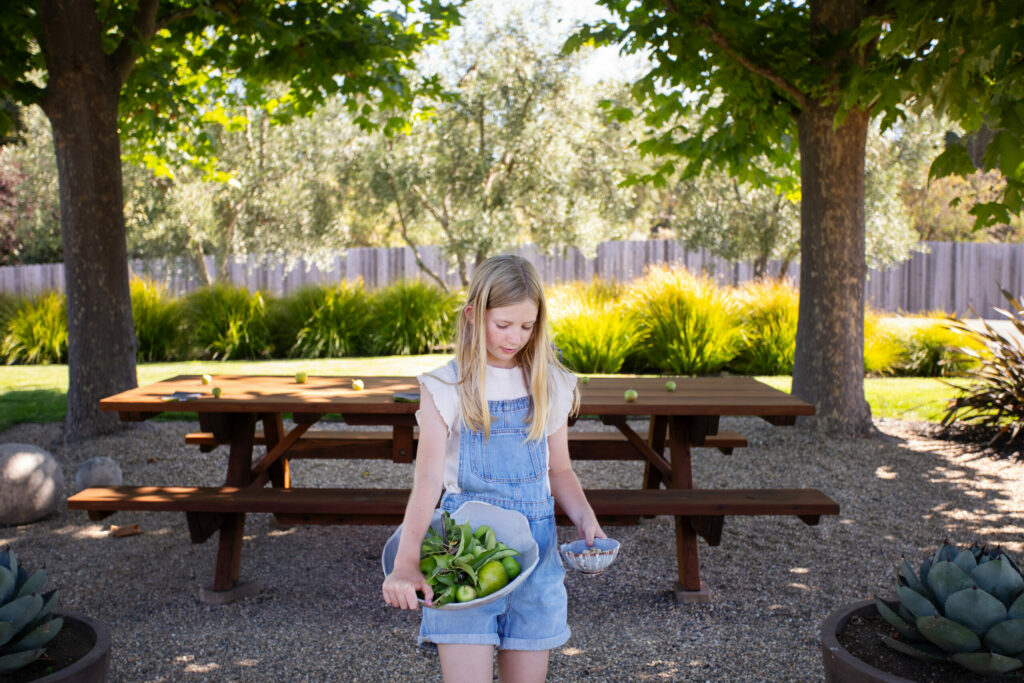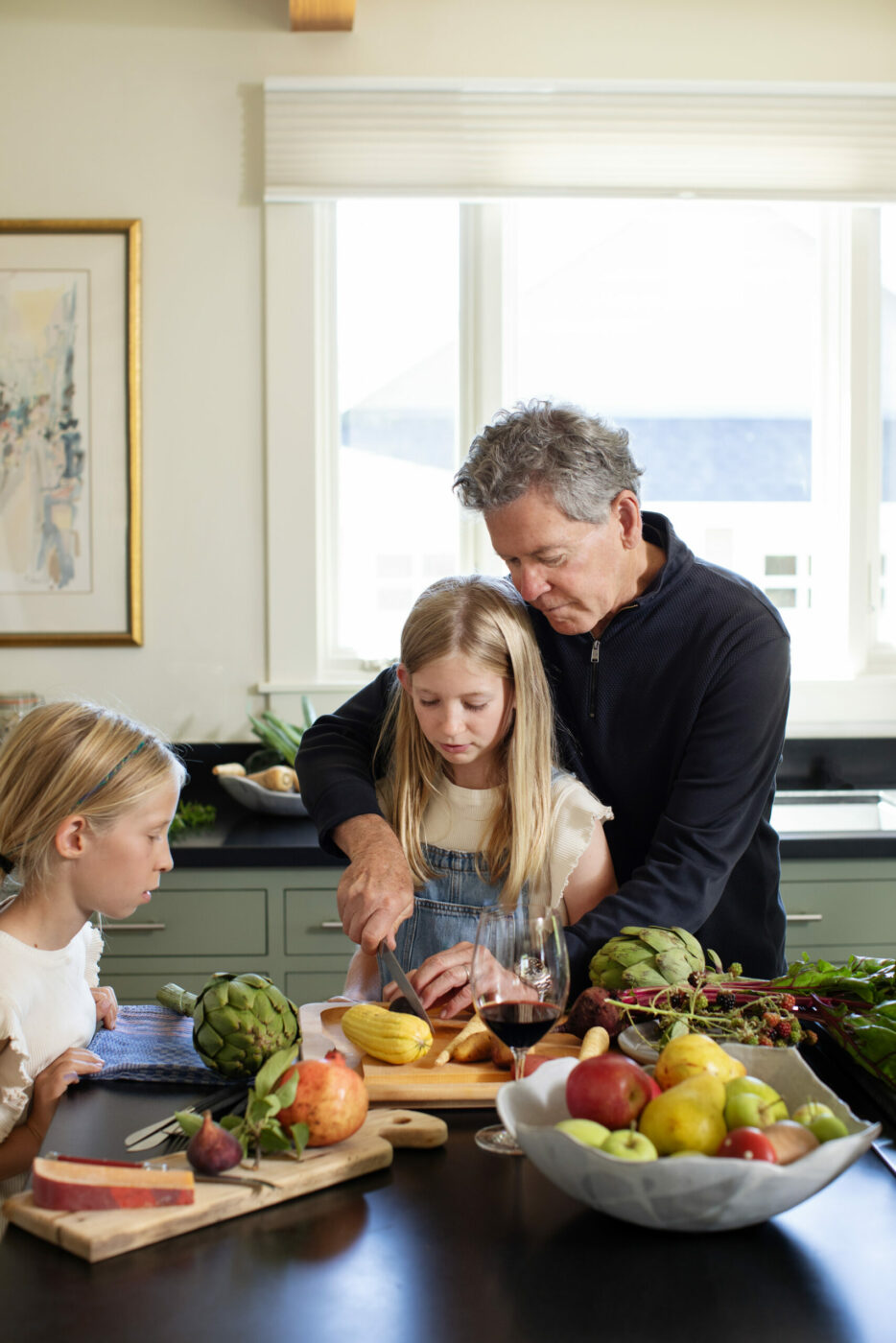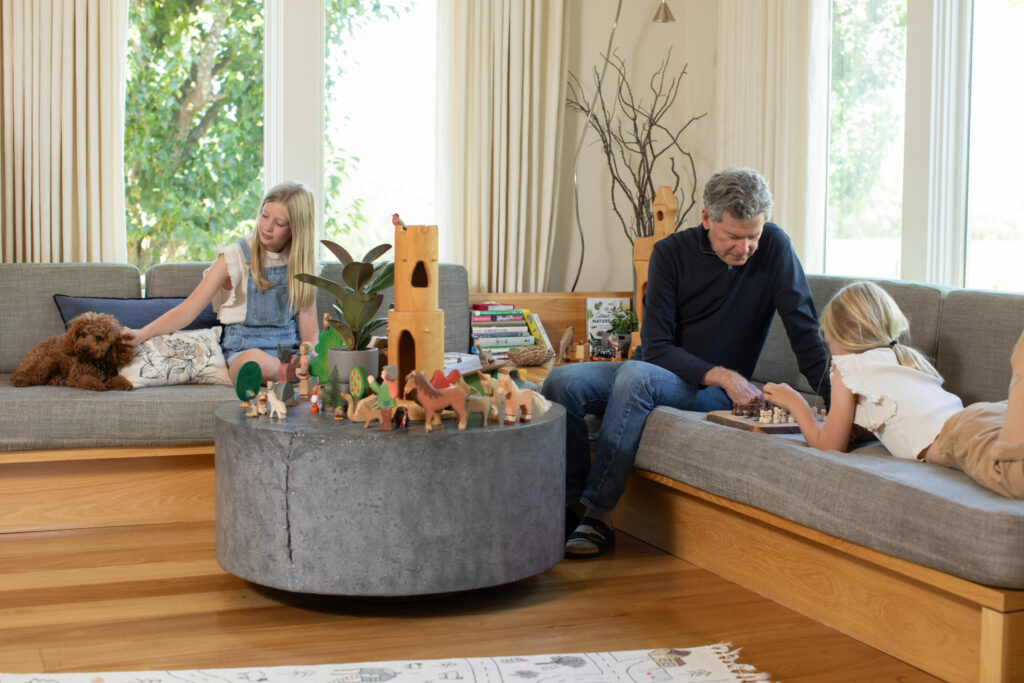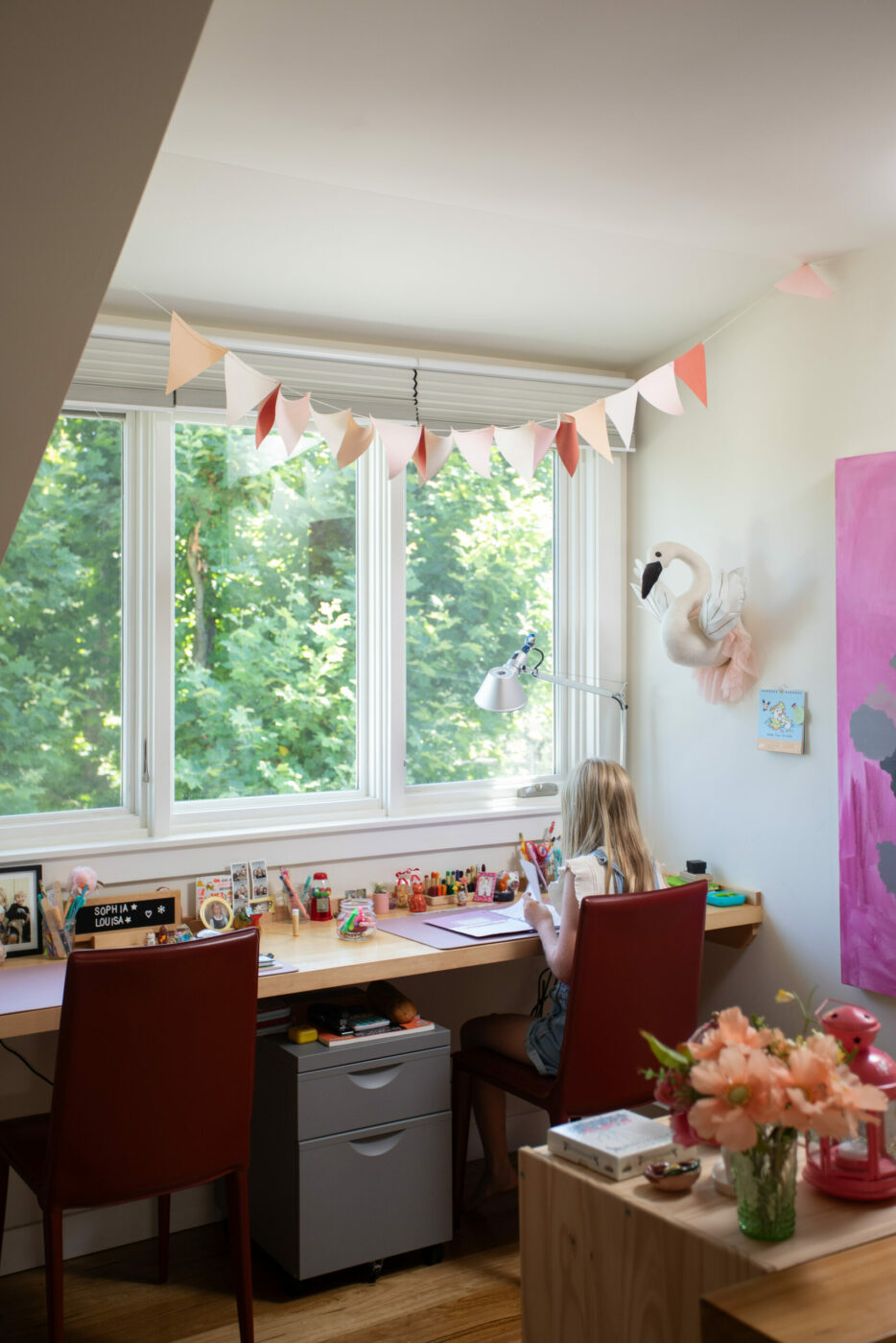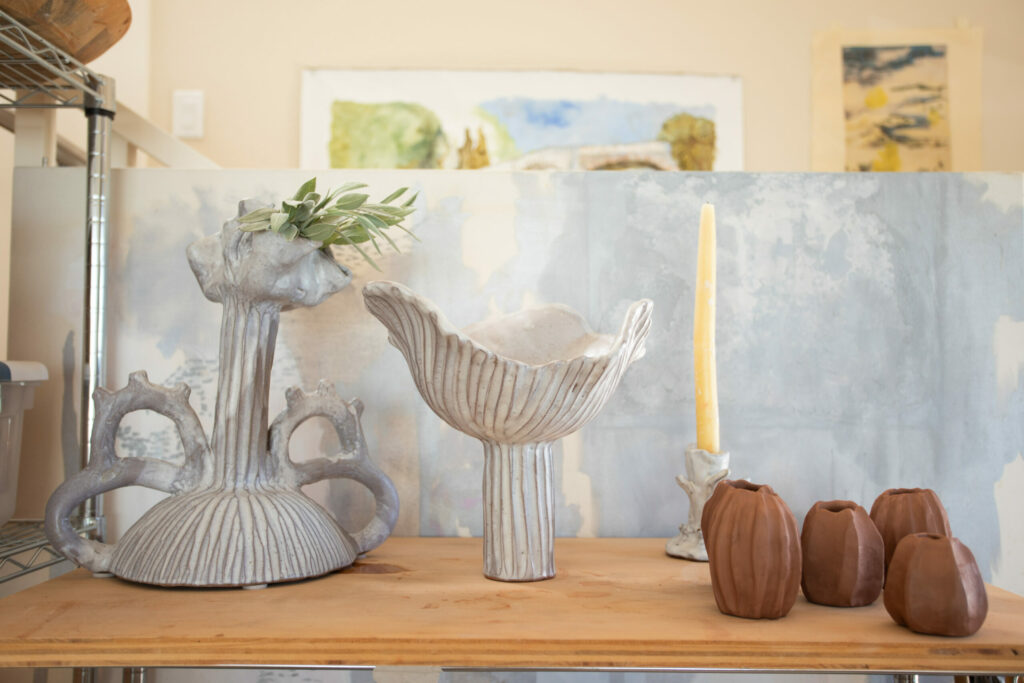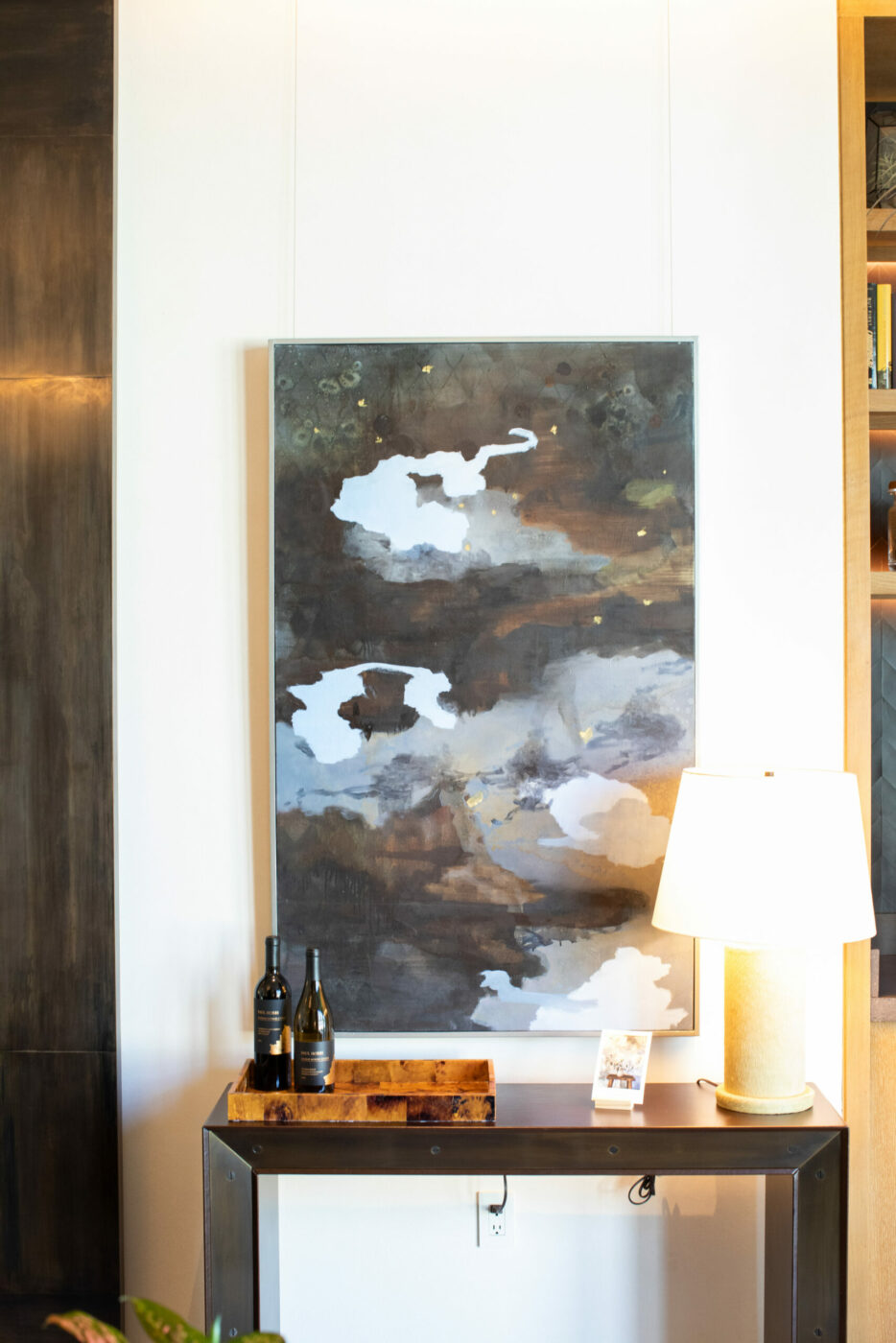Cristina Hobbs sees no reason to have a large house when there is such an expansive landscape — exquisitely styled by Mother Nature — beckoning her outside.
An artist whose paintings, watercolors, and ceramics are inspired by the natural world beyond her windows, Hobbs sees the outdoors — with its gardens, tall grasses, wild animals, vineyards, and trees — as both her creative inspiration and an extension of her home.
If she’s not painting or working at her potter’s wheel in her vineyard studio, you’re most likely to find her playing and engaging in creative projects outdoors with her two young daughters, cultivating flowers for cutting, and gathering herbs and other natural gifts for the table.
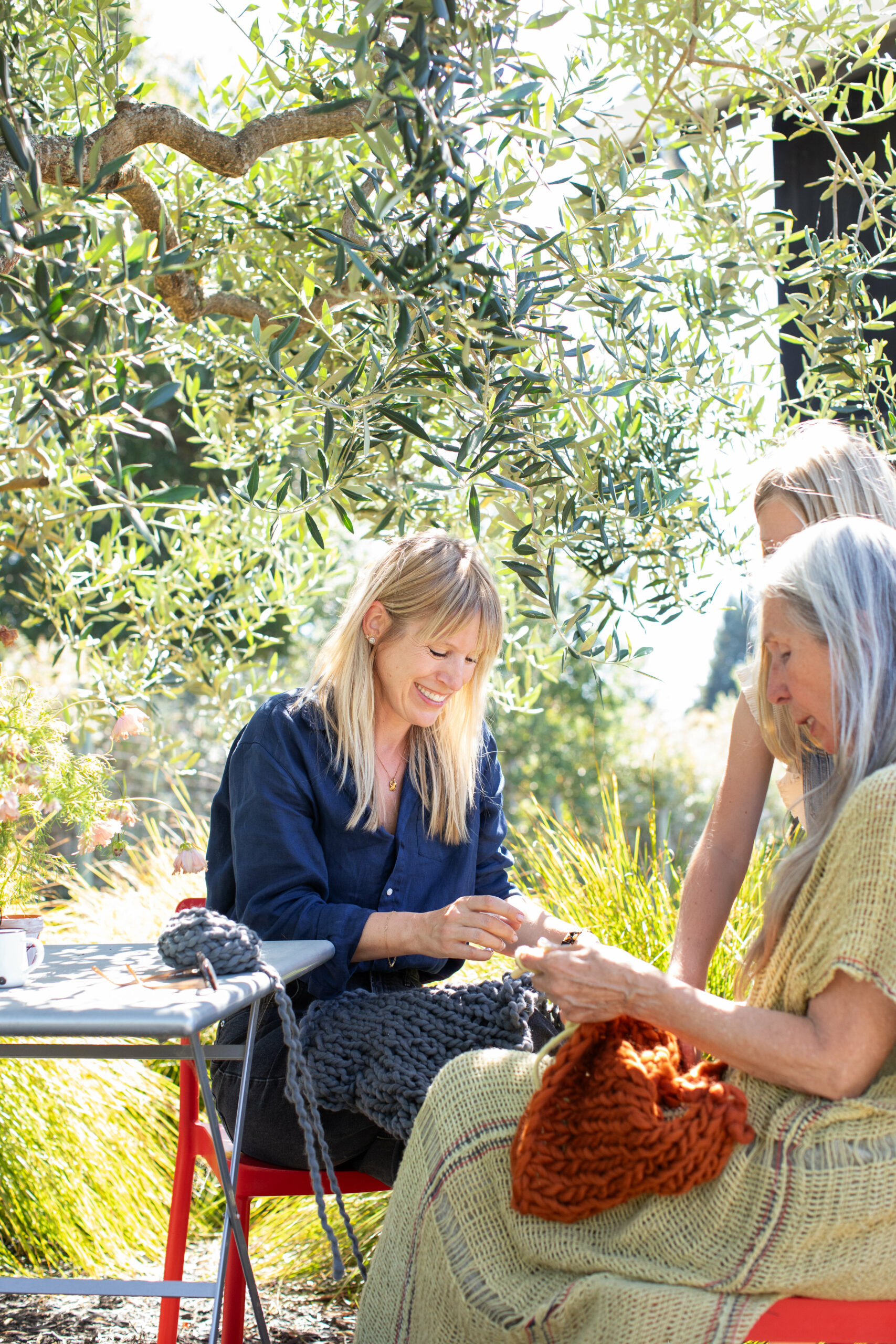
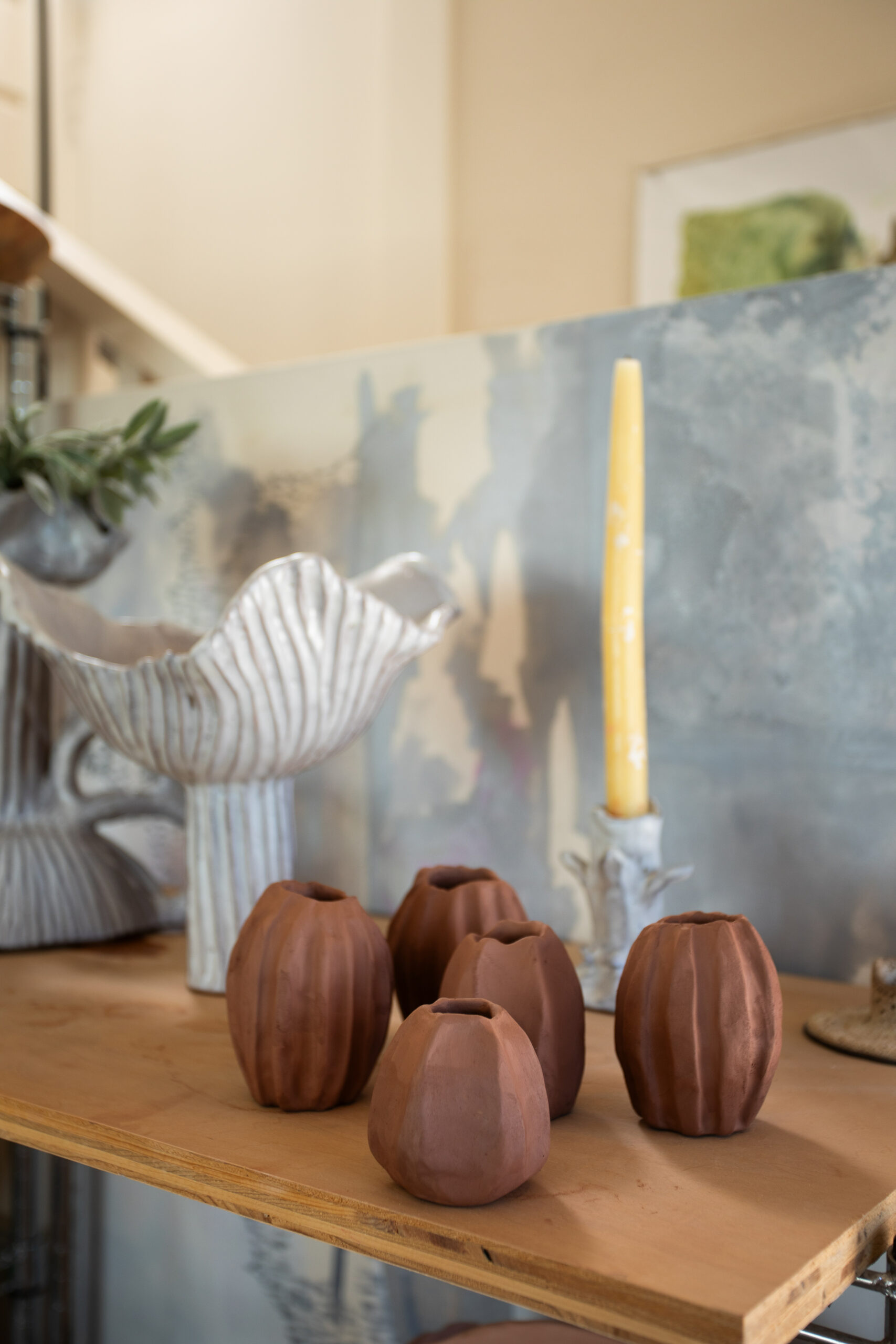
Her ceramics, with their uneven edges and intriguing textures, have an earthy quality; she paints large canvases in a style she describes as being “at the edge between abstraction and figuration” that evoke the colors, patterns, skies, and shifting weather of Sonoma County and Northern California.
Born and raised in Germany — her mother is Argentinian and her father was German — she laid down roots here nearly 20 years ago with her husband, visionary winemaker and international consultant Paul Hobbs, known for his single-vineyard-designate wines. Cristina’s art is similarly entwined with the gently hilly terroir of Sebastopol’s Green Valley, a place often swaddled in morning and evening fog.
The couple met at a winemaker dinner at the Sao Paulo, Brazil home of her mother and her late stepfather, an Argentine diplomat specializing in business and trade. Cristina at the time was pursuing a career in foreign diplomacy herself and had enrolled in a graduate program in Buenos Aires. But meeting Hobbs, who is credited with elevating the then-underappreciated Malbec wine grape in Argentina, would set her on another path to California. Here she explored her artistic side, studying painting at the California College of the Arts in San Francisco and building community with other artists in Sonoma County.
She remembers being bewildered by the cool fog settling over Sebastopol when she first drove in from the airport in 2006.
“When you think of California as a European, you think more of Southern California. I was surprised by that and how cool it was here in the evening,” she recalls of the conditions that would swiftly become so much a part of her life and her art.

She settled into the snug 1910 Craftsman-style farmhouse on 7 acres near the Paul Hobbs Winery that the vintner had bought not long before. Instead of building a new house, Paul, who enjoys architecture and landscape design, enlisted the help of local carpenters Roger Wishard and John Berg. Working with the same footprint and façade, they transformed the interior from a warren of little rooms into an open-beamed, light-filled space with windows that offer picture views of the 5 acres of Chardonnay Hobbs planted on the former apple farm.
“I wanted to preserve it because I felt it spoke to Sonoma County — west Sonoma County — and the ethos of the period,” he says. Even with the arrival of Sophia in 2013 and Louisa in 2016, they remained content in the compact space, which fosters a familial closeness they are committed to maintaining.
“We always found that mostly everyone is in the kitchen. This is where we spend most of our time,” Cristina says, standing behind a stove set to face the dining area and living room for ease of conversation while cooking. The hub is a large, worn black marble island where they do crafts and make cookies.
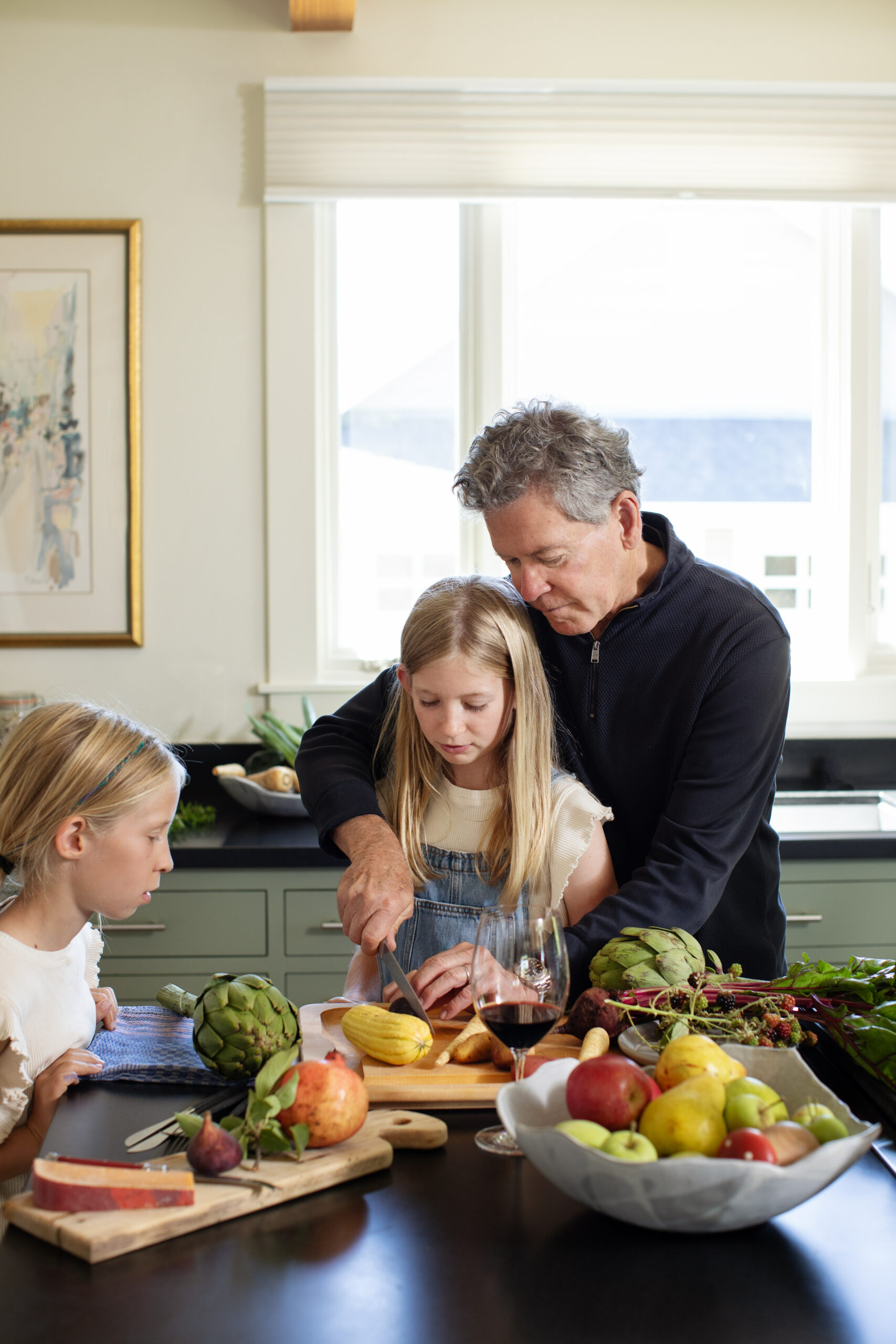
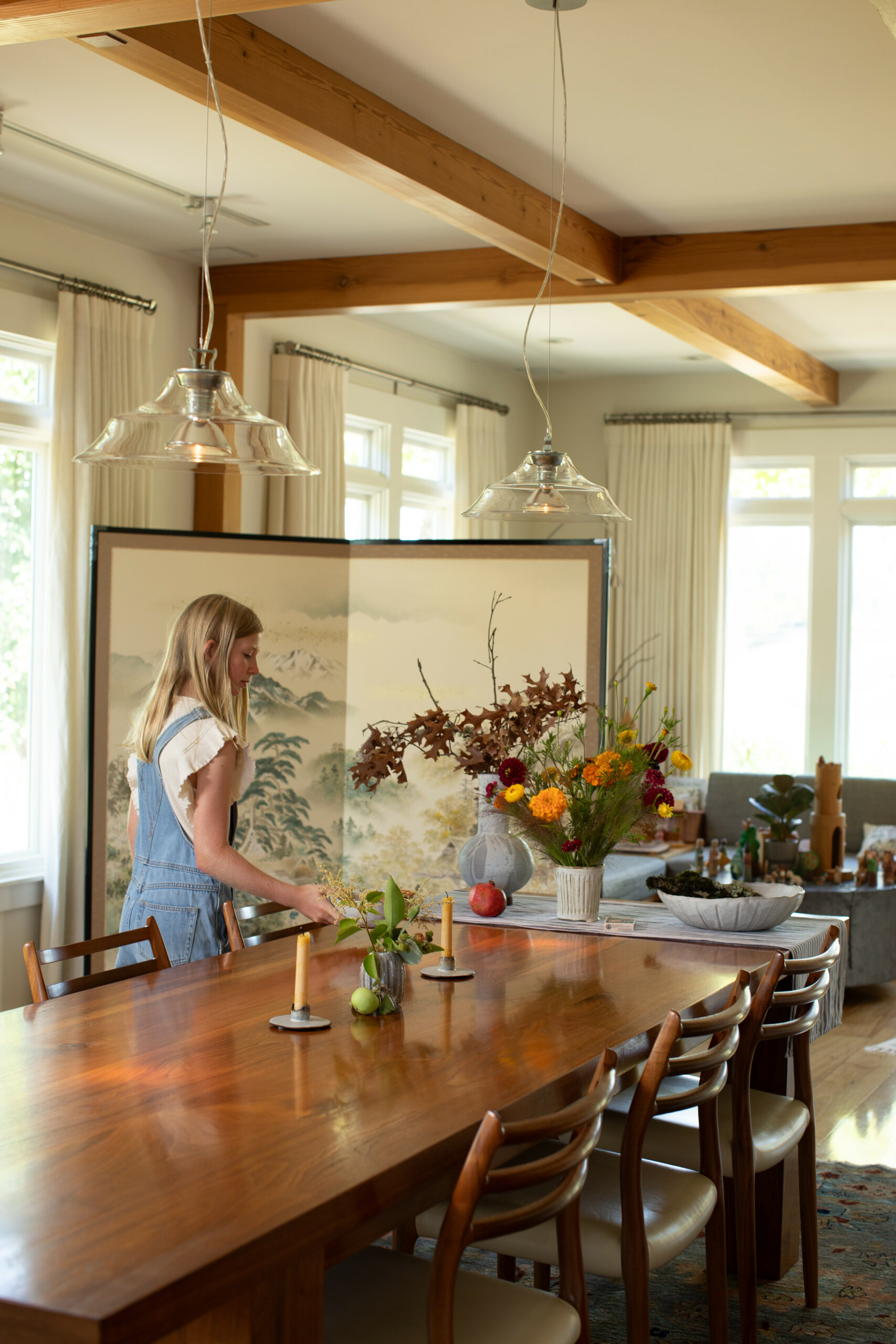
In autumn, the smell of zucchini and banana breads envelop the house. Cristina and the girls like to take their wagon to fetch apples from an old orchard nearby to make apple crumble and tarts. Although the harvest means long days, Paul, who grew up on a farm in a family of 11 kids, makes a point of coming home to eat a homecooked dinner with Cristina and the girls. Everyone sits down at the custom-made walnut farm table together, even if it means dinner is delayed until 7:30 p.m.
Cristina is instilling a love of art into her daughters. Both girls have October birthdays and then there is Halloween, with pumpkins from their own garden and decorations they make themselves. A potting shed in the garden, where each girl has her own raised bed — Sophia has a tea rose bush and chamomile to dry her own teas while Louisa grows blueberries and catnip for their two kitties — also doubles as a crafts room. Tools share space with crafting supplies and a sewing machine.

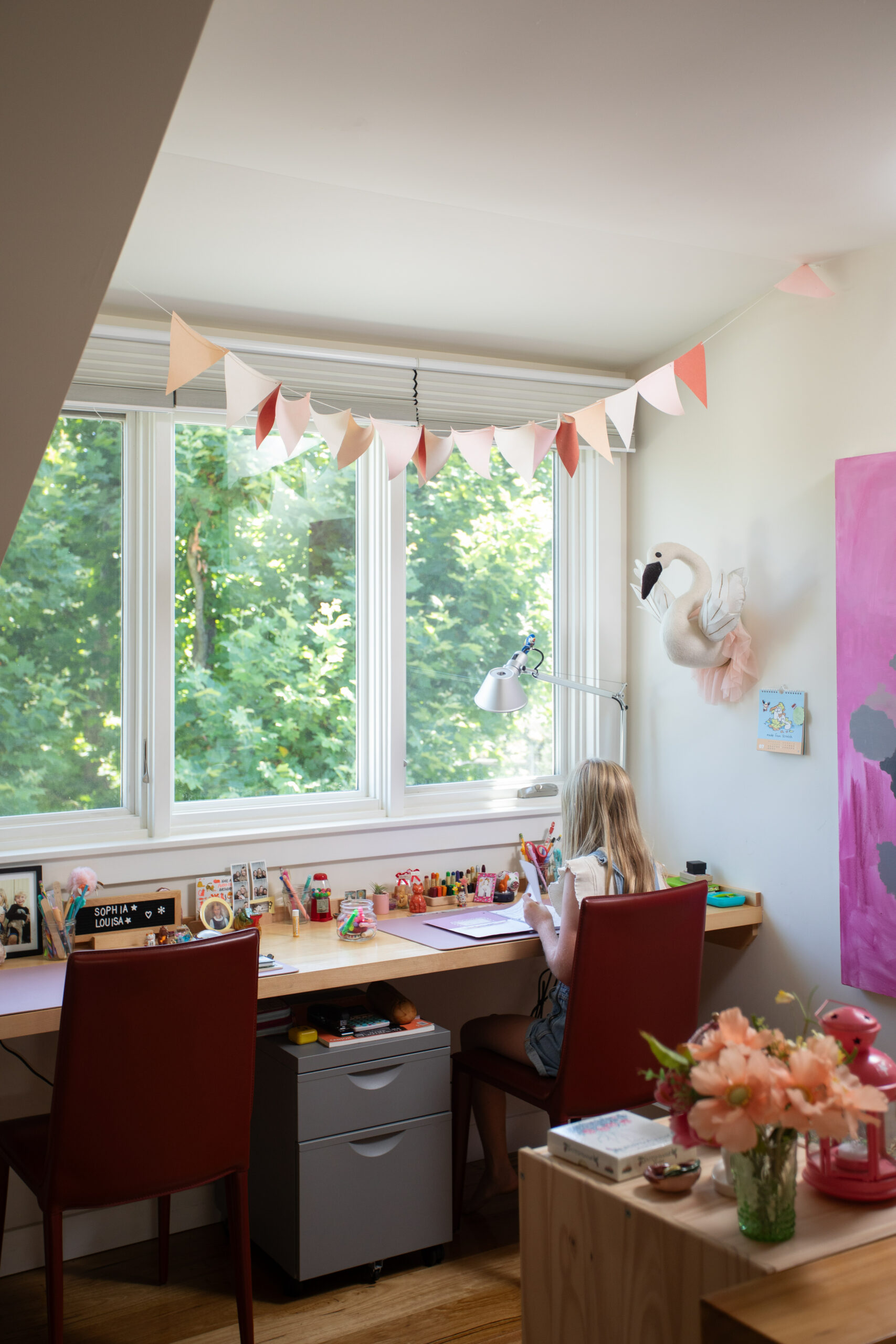
The two-story black shed stands like a cottage amid ornamental grasses, perennials, and sunflowers. With its steeply pitched roof, it makes a perfect haunted house that the girls love to do up with spiderwebs and other spooky decorations. It is their favorite haunt, next to the giant bedroom they share. Carved out of the attic with intriguing spots for hiding and play, it also has a built-in desk that overlooks a broad lawn where they play Frisbee with their miniature poodle, Daisy. From here they can also watch the leaves from a stand of sycamores turn orange, yellow and red.
“We take our rakes and make humongous piles and jump in them,” Sophia says.
The house is simply furnished with a large, custom-designed wraparound sofa for reading and a round, artist-made stamped concrete coffee table with an impression of leaves. Right now, it is covered with colorful wooden toys from Germany, where Cristina goes every summer with the girls while Paul is traveling to his other wineries in France, Argentina, and the Finger Lakes region of New York. But there is always color from the flowers Cristina brings in from her own garden — lots of marigolds in fall — and from Full Bloom Flower Farm in nearby Graton.
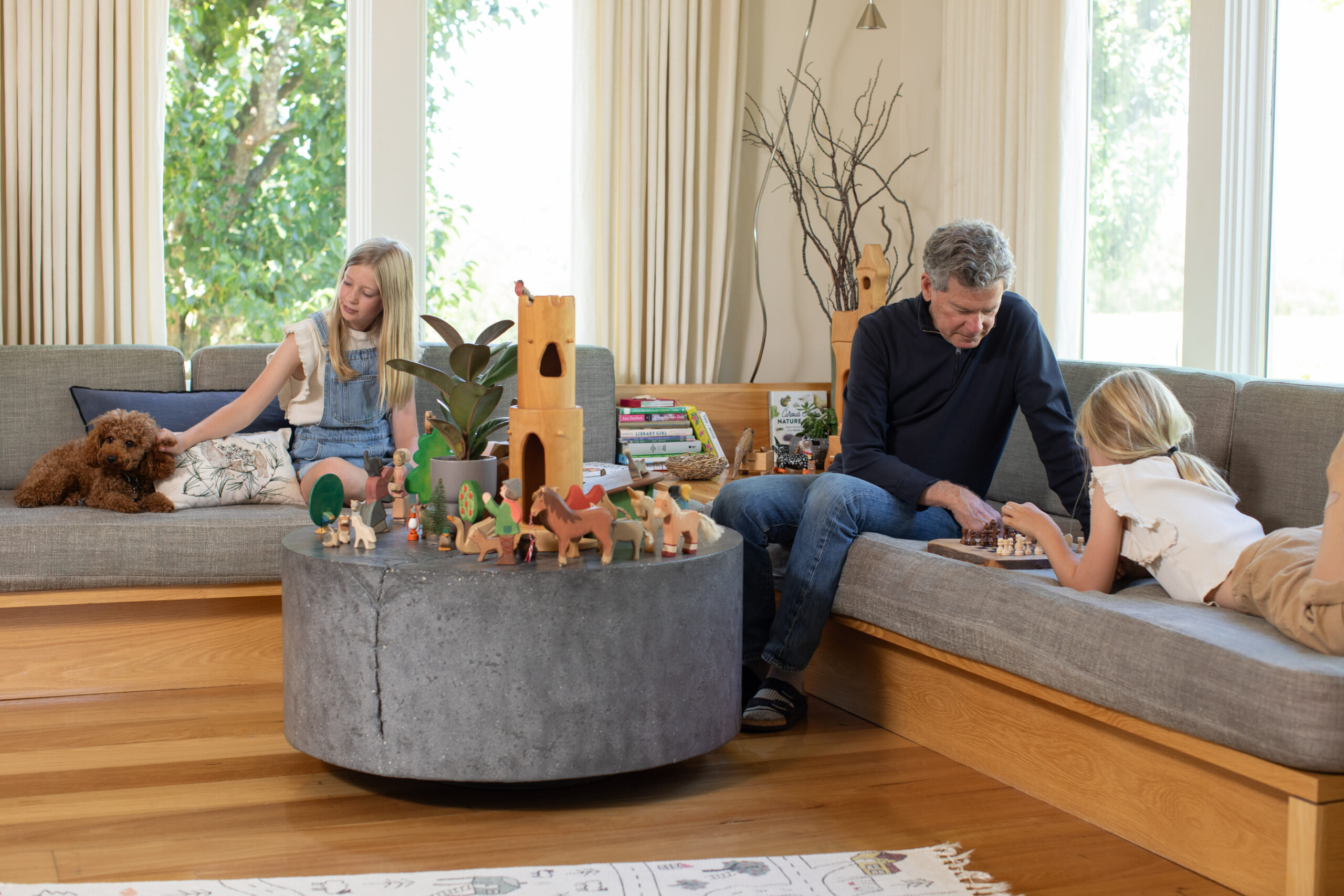
The home is not a gallery of her work, although one particularly atmospheric piece catches the eye in their living space, with another work near the entry.
“It was a time when I was into describing the feel of weather — the fog-like qualities you have in the morning here, the texture of the dried leaves and the raindrops. It’s very nature inspired,” she explains of the soft images that are only suggestive in their dream-like quality in moody hues of indigo and blue — with a burst of buttery gold like sun breaking through the clouds.
Many of her pieces — both paintings and ceramics — grace the hospitality center and the Howard Backen-designed offices at Paul Hobbs Winery a short 15-minute walk away through the vineyards. Cristina’s influence is reflected in the interior design and the paintings she created especially for the space based on local scenes. She and Paul worked closely with the late Backen, one of Wine Country’s leading architects and pioneer of the rural vernacular style, to create the winery offices, a series of connected buildings bridged by glass hallways. Cristina’s paintings capturing the natural moods of the landscape are also featured on several wine labels.
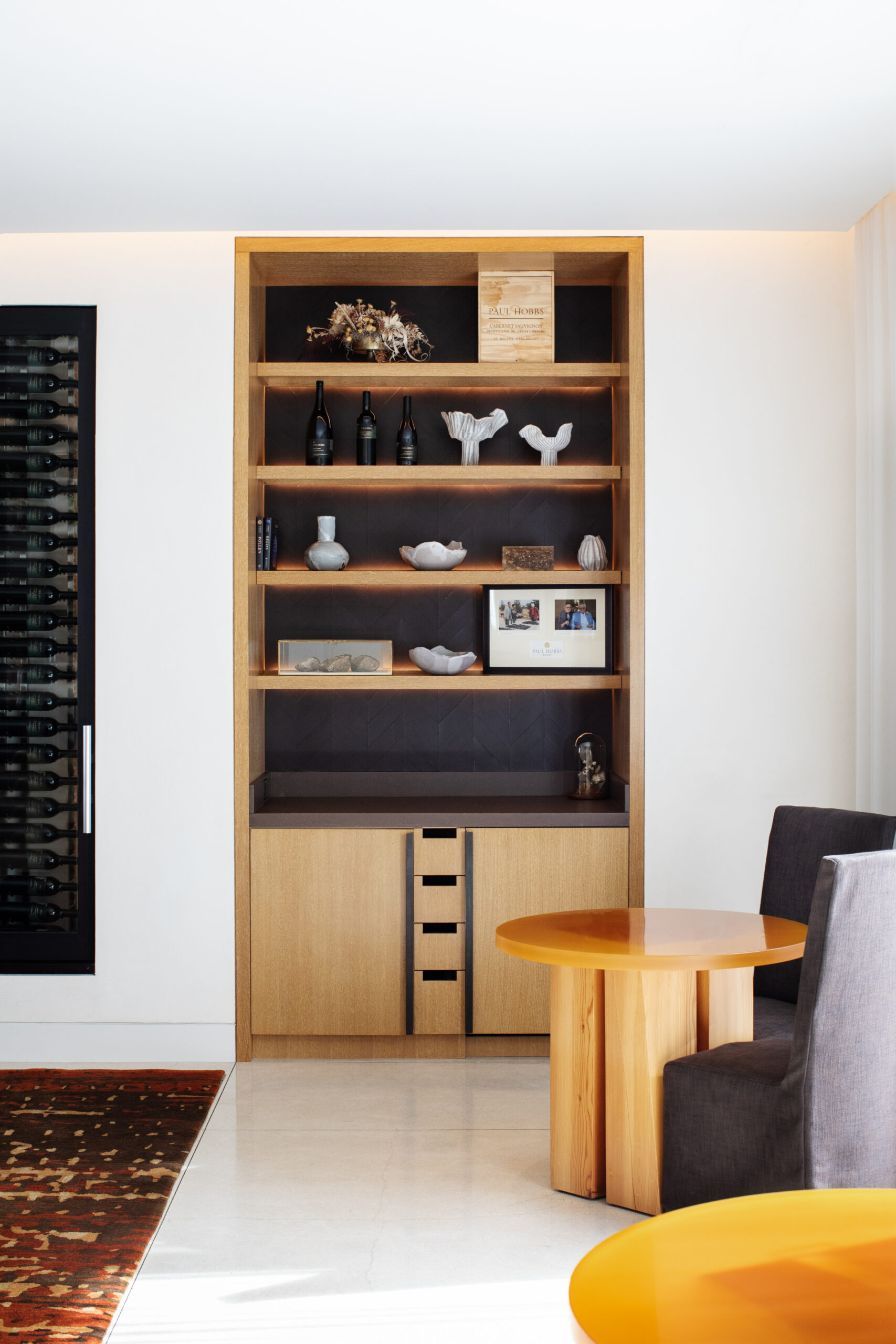

After she drops the girls off at school, Cristina heads out into the backroads and takes long walks, often pausing to photograph things she sees along the way as a “starting point” in her creative process. One of her favorite hikes is the Pomo Trail out to Shell Beach, where, from one particular perch, she is captivated by the site of the Russian River flowing into the Pacific Ocean. She takes note of whatever is growing and is especially taken by the lacy lichen that hangs from the oaks like underwater coral, something she never saw in Germany.
She brings her ideas back to a small studio carved into an historic 1850s farmhouse at Paul Hobbs’ Ross Station Estate, a former stagecoach stop. Here, Cristina can sit at her small potter’s wheel or work on a canvas while looking out at nature unfolding in the vineyards. It could be the fog burning off in the distance or a pack of coyotes on the move.
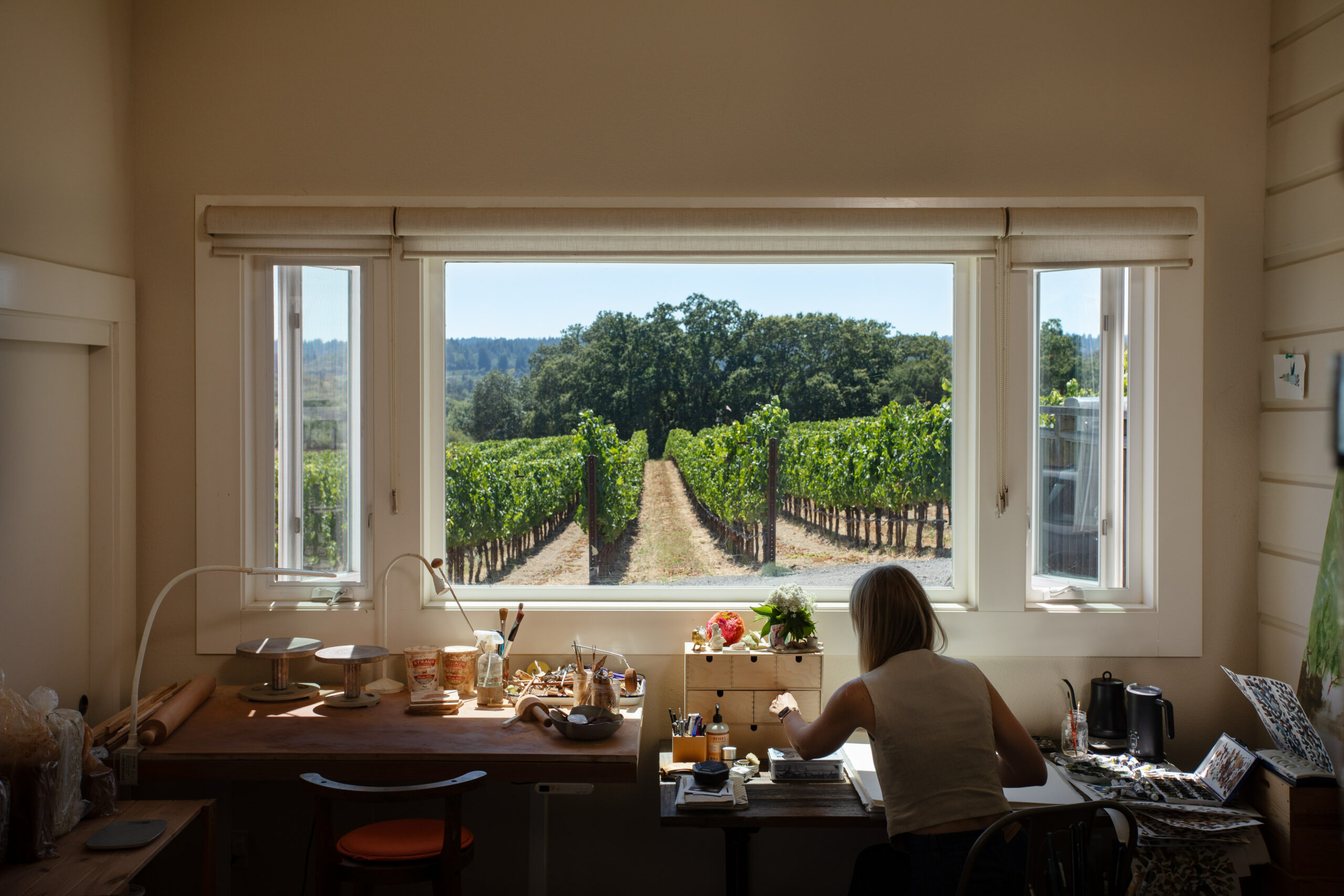

She doesn’t overthink her work or constrain it by sketching it out before she applies brush to canvas or hands to the clay. “If something else comes in at that moment, I want that to happen. I don’t want to feel obligated because I made that sketch,” she explains.
She instead lets it flow naturally, and she often surprises herself by what comes out. But it all speaks to her appreciation of the small moments: carving pumpkins with her girls, sharing a family meal, or watching the weather shift outside her window. Her images are, as she herself describes them, “observations of the everyday that at times go unnoticed; a celebration of the little things you see that stay in the back of your mind.”
Find Cristina Hobbs’ artwork at cristinahobbs.com and at Maison Djouf at 332 Healdsburg Ave., Healdsburg, maisondjouf.com.




